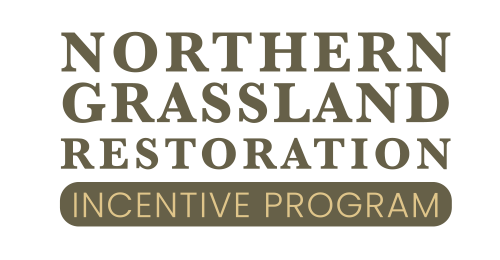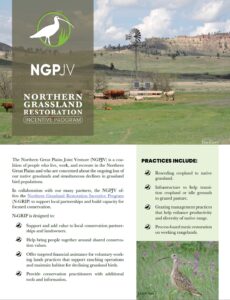The Northern Grassland Restoration Incentive Program, or N-GRIP, is a financial assistance program for conservation delivery in the Northern Great Plains. It is designed to complement the various programs offered by our partners in the landscape. N-GRIP consolidates various funding sources into a streamlined program that works across jurisdictions with the goal of restoring, enhancing, and retaining grasslands in the region.
N-GRIP offers targeted financial assistance for voluntary working lands practices that support ranching operations and maintain habitat for declining grassland birds.
The foundation of N-GRIP is to restore and enhance the function of grasslands and the ecological processes that they provide, which has mutual benefits for producers and wildlife.
A practical measure of success for the NGPJV is to monitor the impact of conservation actions on grassland birds. There are five declining species we use as a barometer for ecological conditions in the Northern Great Plains: Baird’s Sparrow, Chestnut-collared Longspur, Lark Bunting, Thick-billed Longspur, and Sprague’s Pipit. If we can dampen population declines, in part through N-GRIP and the various work of producers and our partners, we will achieve many other conservation and societal objectives. An important one is maintaining a viable ranching community.
Common practices included under N-GRIP:
- Grazing infrastructure (e.g., fencing, water)
- Grazing management
- Reseeding cropland to native grassland
- Mesic restoration
N-GRIP Summary of Accomplishments

N-GRIP Forms and Guidance


